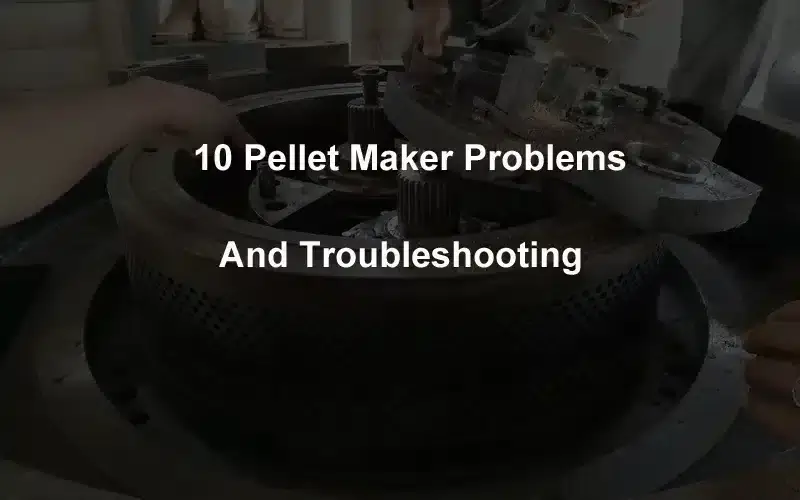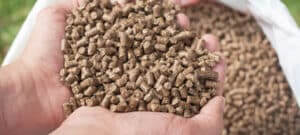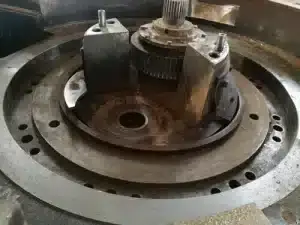
10 Common Pellet Maker Problems and How to Fix Them
Pellet makers can be a great alternative to harmful chemicals or for people who are health conscious about their yard. However, in order to get the best results, it is very important that you choose well when it comes to choosing the type of machine and where you will buy one.
If you choose the wrong type of mill (or one that is not in proper condition) then you might have to face a lot of problems with regard to using your machine. Most pellet maker problems are not really hard to solve but most users don’t know how to take care of their machines properly and get poor results as a result.
Here are 10 common problems pellet maker owners face and how they could be prevented or resolved:
1. Pellet maker won’t start
The most common problem with Pellet makers is that they won’t start. we will talking about some of the most common reasons why your wood pellet maker won’t start, and how you can fix them.
1) First, check to see if there are any loose wires or connections that could have come loose during shipping or installation. This can happen if there was a lot of vibration during transit or if someone accidentally kicked over a box during installation and caused damage to cables and connectors inside the control panel.
2) The next thing to check would be the circuit breaker on your control panel. If this has tripped, it may mean that there is something wrong with your firebox or combustion chamber where the pellets are being burned.
This could be anything from a bad sensor monitoring temperature in the firebox, or even just too much ash buildup inside your pellet maker causing problems with air flow through it. You may need professional assistance from someone who knows how
2. The pellet density is too low, the pellets are soft and crumbly.

The pellet density is too low – This can lead to poor quality pellets because they will be too light and may disintegrate when processed further. You will need to check the speed settings on your machine and make sure that they are set at the right levels. If the speed is too low, then the density will be low and vice versa.
The pellets are soft and crumbly – The reason for this could be that the temperature settings are too high. This can cause the pellets to become soft and crumbly which means that they will not have their usual durability when processed further into finished products such as animal feed or wood pellets for burning in stoves or boilers. Check your temperature settings again and adjust them accordingly until you get the desired consistency in your product.
3. Pellet maker overheats
This is a common problem and can be caused by several different issues.
The main issue that can cause overheating is if your motor is not being cooled properly. You need to make sure that there is enough air flow over your motor so that it stays cool while running at high speeds and feeding large amounts of material through it.
If you are having trouble with your pellet maker overheating, here are some steps that will help:
Check to see if there are any obstructions in your pellet maker such as dust or dirt build up on parts inside of it; this could cause problems with airflow which can cause overheating
Make sure that there are no loose bolts or screws inside of your machine; this could cause vibrations.
4. Jammed pellet maker

One of the most common problems with pellet makers is that the pellets get jammed inside the machine. This can happen for several reasons:
Insufficient Pellet Size – If you don’t have enough room in your pellet maker, it may be too small to handle all the pellets being made. You’ll need to upgrade to a larger pellet maker if this is happening to you, or find a way to streamline production and make fewer pellets at a time.
Dirty Pellets – If your pellets are dirty or dusty, they may not burn properly when they are used in a fireplace or wood stove. Make sure that you’re using clean wood chips for making pellets, and if possible, try drying them before putting them into your pellet press (by letting them sit outside for a few days).
Incorrect Temperature – The temperature at which you are pressing your pellets is very important. If your press is too hot or too cold, it won’t make good-quality pellets that burn well in stoves and fireplaces. For best results, make sure that the temperature of both sides of each piece of wood chip is between 175°F and 285°F before pressing it into a pellet shape!
5. Abnormal amount of raw material in finished pellets
Abnormal Amount of Raw Material in Finished Pellets – This may be due to an improperly calibrated feeder on your machine, which means too much material is going into it at once instead of just enough for one cycle at a time so there’s too much left over after each cycle has been completed.
Another reason for this is the moisture content of the raw material is too high or low. If this happens, then there won’t be enough room left in the machine to create finished pellets.
To fix this problem, adjust your feeder so less raw material enters at once and therefore less gets left over after each cycle completes successfully completing its own task, and control the moisture of the feeding material, the ideal moisture content is 10-15%, too wet or too dry will lead to failure.
6. Overload protection is disabled
Overload protection is a safety mechanism that prevents the pellet maker from working too hard. It’s designed to keep the motor, fan and other parts from overheating. If you’re getting an overload error, make sure that the fan is properly balanced and that there’s nothing obstructing the air flow. If this doesn’t fix the problem, you may need to replace your pellet maker’s fans and/or motors.
7. Noisy, strange sounds, and vibrations
If you’re hearing strange rattling or grinding noises coming out of your pellet maker, it’s likely because the hopper is too full. Pouring in too much material at once can create a clump that blocks the flow of air and leads to a blockage somewhere in the system. This can cause a buildup of pressure that results in vibrations when it finally breaks free.
You may also find that you have to force your pellets through with more force than usual, which can lead to damage over time.
The best way to fix this problem is to empty out some of your pellets from the hopper so that there’s room for them all to flow through without any problems. This will also make it easier for you to use the machine on a regular basis without having to worry about damaging it over time due to having too much material in one place at one time.
8. Uneven pellet size, the pellets are too big or too small
If your pellet maker is producing unevenly sized pellets, there could be several issues causing this problem. First, check if your auger is broken or cracked. If so, it will need to be replaced by a new one.
Second, make sure that there aren’t any foreign objects in your auger that could cause an obstruction when you’re processing wood chips into pellets. A good cleaning will help get rid of these contaminants as well as improve airflow through the auger so that it doesn’t jam up when making pellets.
And also If the moisture content of your raw material is too high, it will affect the size of the finished pellets. If your material contains too much moisture, it will expand during processing and start sticking together instead of being ground into individual particles. You can solve this problem by drying out your raw material before putting it through your pellet maker so that it has less than 15 percent moisture content.
If there’s not enough airflow in your system or if there isn’t enough power going into your machine, then it won’t be able to process all of your raw materials effectively and some will pass through unprocessed
9. Excessive machine shutting down
If you are using a pellet maker, and you find that it is shutting down on a regular basis, it could be due to the temperature of your motor.
When you use your pellet maker, make sure that you give it time to cool down after each cut or else the motor will overheat and shut off automatically. If this happens frequently, there is something wrong with the motor or its wiring. You may need to replace some parts or have them repaired by a professional.
Another possible reason for this is if the wood pellets are too hard or too soft.
To fix this problem, you should change the type of wood pellet that you use. If you are using the wrong type of wood pellet, then this could cause damage to your equipment.
10. Lack of output and production capacity, the pellet maker does not produce enough pellets.
This means that the machine does not produce enough wood pellets even though it has been working for some time now. The reason for this problem could be because there is something wrong with the motor or there might be some other problem as well.
Whatever may be the reason, it is important to fix this problem as soon as possible so that you can start producing more wood pellets again.
If you find out that there is something wrong with your motor then you should get it fixed immediately because otherwise it will lead to other problems like overheating or overloading which can cause further damage to your machine as well as cause safety hazards for all those
Another reason for this is your material moisture content, if your feedstock has too much moisture in it, it will not be able to be ground up properly. In order to fix this issue, make sure that your feedstock is as dry as possible before putting it through your pellet maker.
Conclusion :
Pellet makers are highly sensitive machines and require some amount of maintenance and repair from time to time. We hope that this article has provided useful information on common problems with pellet makers and how to troubleshoot them. Pellet maker owners can use this guide to diagnose the problem and get it repaired in a timely manner. If you still have any questions about the pellet maker problems, you can contact with us directly ,we have experts by your side.
Talk to An Expert
SHARE THIS POST
Talk to An Expert
